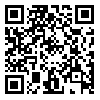Volume 2, Issue 3 (12-2016)
J Sport Biomech 2016, 2(3): 15-23 |
Back to browse issues page
Download citation:
BibTeX | RIS | EndNote | Medlars | ProCite | Reference Manager | RefWorks
Send citation to:



BibTeX | RIS | EndNote | Medlars | ProCite | Reference Manager | RefWorks
Send citation to:
Hajlotfalian M, Redaei A, Sadeghi H. Biomechanical Modeling of Selected Methods of Load Carriage to Improve Military Capabilities of Troops . J Sport Biomech 2016; 2 (3) :15-23
URL: http://biomechanics.iauh.ac.ir/article-1-81-en.html
URL: http://biomechanics.iauh.ac.ir/article-1-81-en.html
1- Department of Sport Biomechanics, Faculty of Physical Education and Sport Sciences, University of Kharazmi, Tehran, Iran
2- Department of Chemical and Polymer Engineering, Faculty of Engineering, Yazd University, Yazd, Iran
2- Department of Chemical and Polymer Engineering, Faculty of Engineering, Yazd University, Yazd, Iran
Abstract: (5716 Views)
Objective: The purpose of this study was to develop a model to compare some selected methods of load carriage during sitting and rising, and to introduce the best method of reducing power consumption and the risk of injury among military men.
Methods: Ten subjects were selected to perform the required task to determine anatomical constraints, kinematic data and to extract some parameters for modeling. Subsequently, the center of mass position of four equipment for load carriage, including, Backpack, Double pack, Trunk vest and Double satchel, were determined and four different two- dimensional models of body with four segments were developed based on inverse dynamics equations. After applying constraints and cost functions, genetic algorithm was used to find the optimal model.
Results: Based on the results, power consumption in Backpack method was the lowest and double satchel method inserted the least momentum on hip torque.
Conclusion: A more practical choice for military operations is to carry a load as close as possible to the center of mass of the body in a nutshell, between all methods, carrying load through the Backpack method, according to its capabilities, is the best choice for carrying heavy and bulky equipment.
Methods: Ten subjects were selected to perform the required task to determine anatomical constraints, kinematic data and to extract some parameters for modeling. Subsequently, the center of mass position of four equipment for load carriage, including, Backpack, Double pack, Trunk vest and Double satchel, were determined and four different two- dimensional models of body with four segments were developed based on inverse dynamics equations. After applying constraints and cost functions, genetic algorithm was used to find the optimal model.
Results: Based on the results, power consumption in Backpack method was the lowest and double satchel method inserted the least momentum on hip torque.
Conclusion: A more practical choice for military operations is to carry a load as close as possible to the center of mass of the body in a nutshell, between all methods, carrying load through the Backpack method, according to its capabilities, is the best choice for carrying heavy and bulky equipment.
Type of Study: Research |
Subject:
Special
Received: 2016/01/5 | Accepted: 2016/11/12 | Published: 2017/09/14
Received: 2016/01/5 | Accepted: 2016/11/12 | Published: 2017/09/14
| Rights and permissions | |
 |
This work is licensed under a Creative Commons Attribution-NonCommercial 4.0 International License. |





